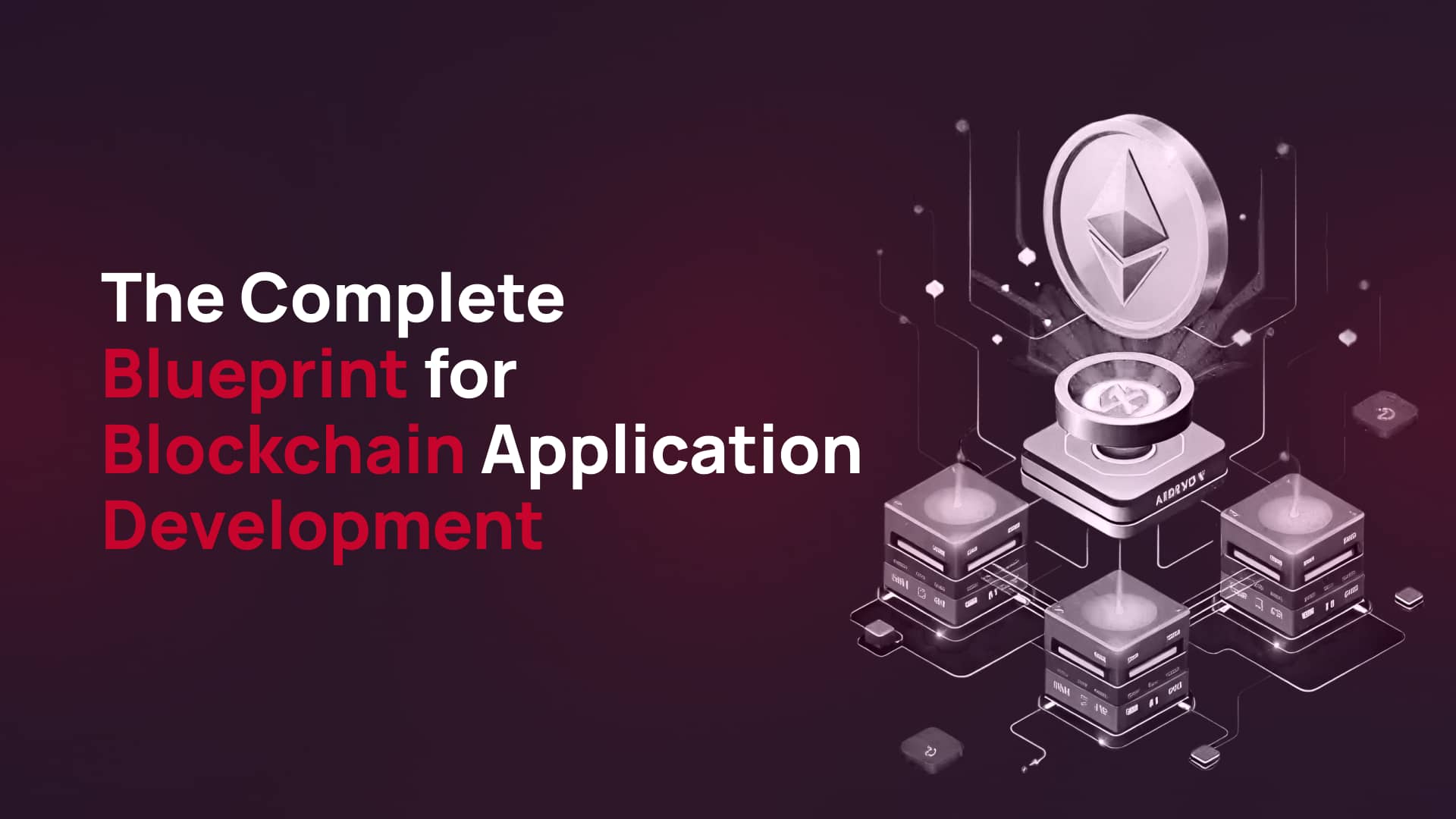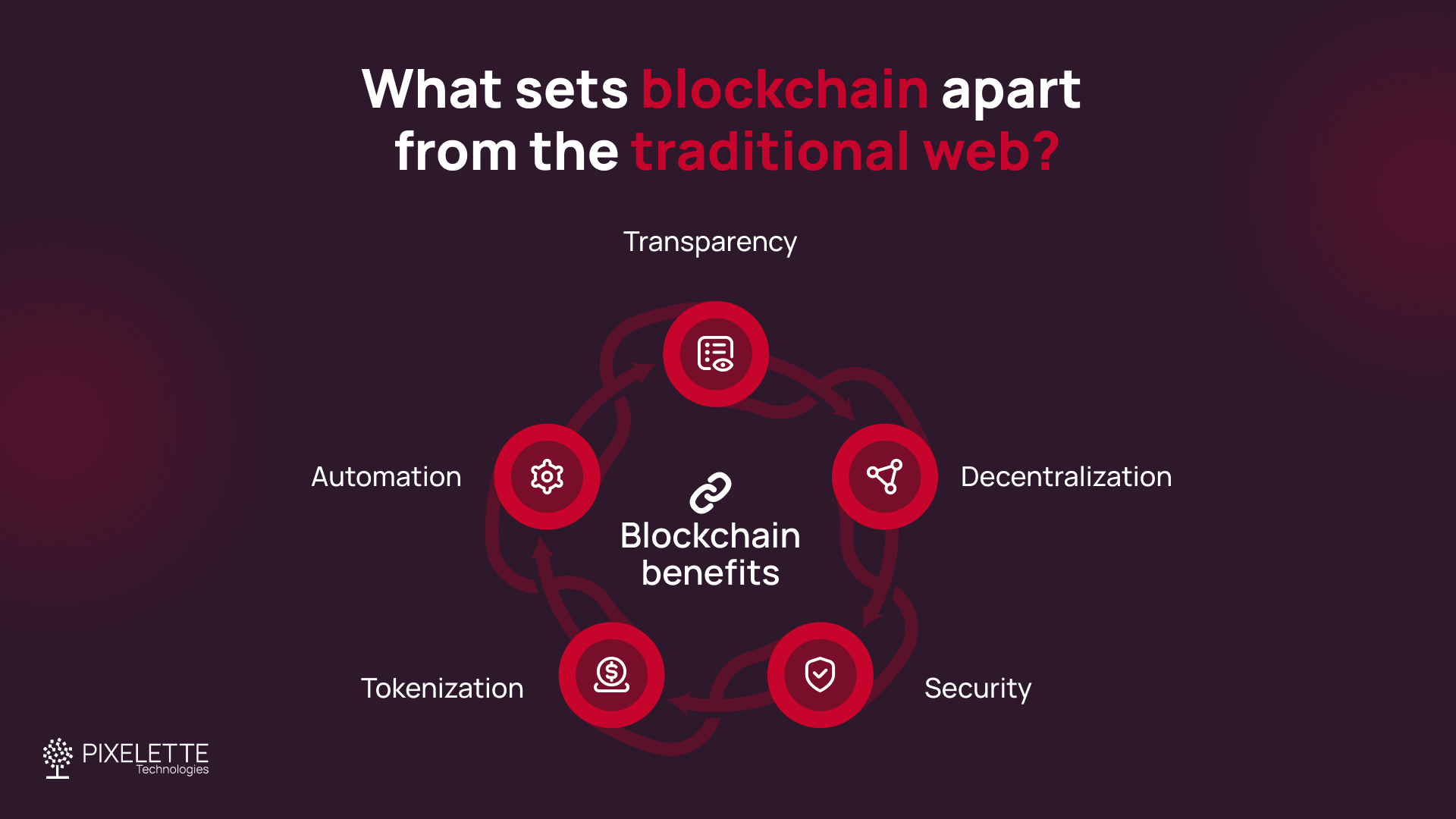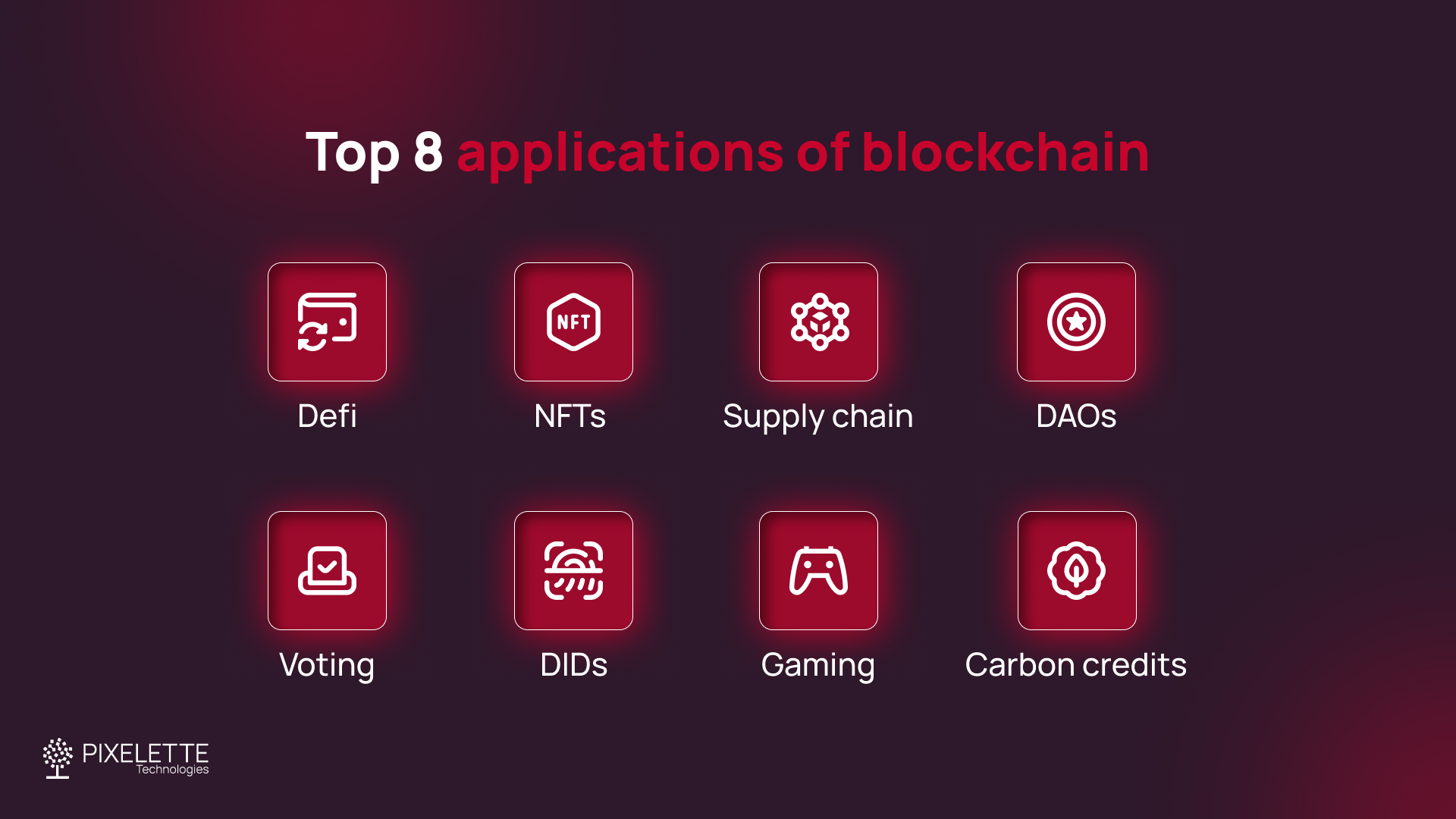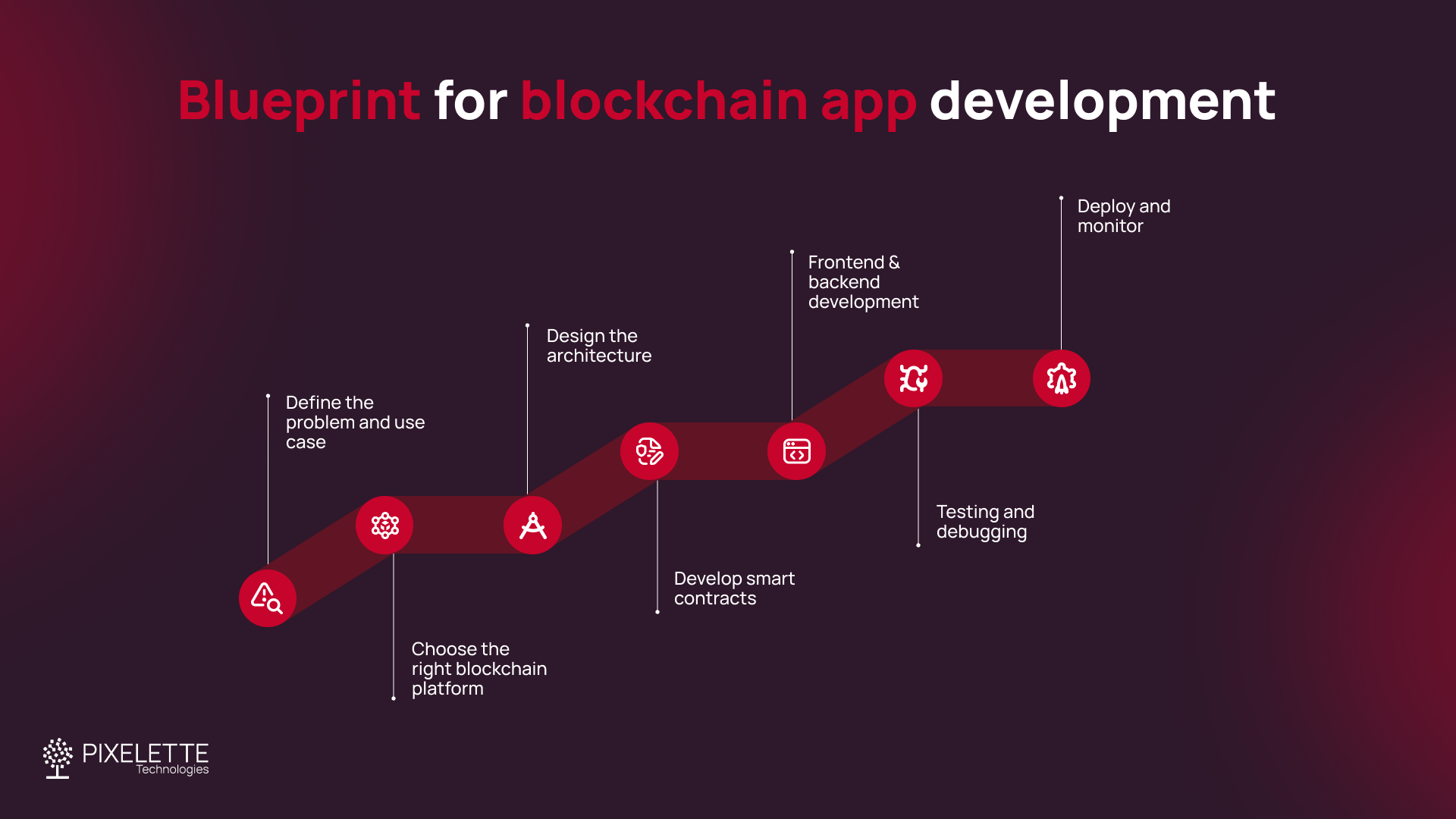The Complete Blueprint for Blockchain Application Development
Written by
Aimun Cheema
Last Updated: June 30, 2025

Your Blockchain Journey Starts Here
Whether you're launching a DeFi platform, NFT marketplace or enterprise blockchain solution, we deliver technology that transforms. Book Your Free Consultation Today.
Not long ago, blockchain was a niche concept discussed mainly in tech forums and developer circles. Today, it’s powering payment systems, digital identity frameworks, international logistics, and more, often in places few would have expected. As adoption spreads, so does curiosity. Yet despite the surge in interest, a great deal of confusion remains.
Many teams dive into blockchain development without fully understanding the landscape: unsure of the right tools, architectures, or even whether blockchain is the appropriate solution for their problem in the first place. That’s where a clear, structured blueprint becomes invaluable.
This article isn’t just another theoretical overview. It’s a practical guide designed to walk you through the critical stages of blockchain application development, from evaluating whether blockchain is the right fit, to designing, building and deploying a functional solution. Think of it not as a step-by-step tutorial, but as a hands-on companion; something to keep open as you move through your development journey.
But before we go into breaking down the blueprint for blockchain application development, let's look at what the latter really is.
What is blockchain application development?
At its core, blockchain application development is about building apps that work without centralized control. It connects straight to a blockchain network, unlike other typical software. That shift changes how data is handled, how the logic flows, and how users come to trust the system without needing a middleman.
Unlike regular apps that do everything behind the scenes, blockchain apps run on shared records that are open for everyone to see, and impossible to quietly change. That might sound like a small shift, but it flips a lot of things upside down, especially when it comes to ownership, data security, and user control.
There are different types of blockchains you can build on:
Public blockchains (like Ethereum or Solana) are open to anyone. Anyone can read, write, or participate. These are ideal for apps where decentralization is a priority.
Private blockchains are permissioned and are used more often by enterprises or closed networks. Think internal supply chain tools or secure recordkeeping.
Consortium blockchains are somewhere in between. A group of organizations share control. These are popular in finance, healthcare, or government-backed platforms.
Real-world adoption isn’t limited to crypto anymore. You’ll find blockchain being used in banking systems, healthcare data sharing, logistics tracking, and even digital art ownership. The tech has outgrown its early reputation. Now, it’s about solving real-world problems, not just trading coins.
Why build on blockchain?
Most people don’t choose blockchain just because it’s new; they pick it because it solves problems that old systems can’t. Some of the benefits of blockchain include:

Transparency → Each transaction is recorded on a public ledger that anyone can check.
Immutability → You can’t quietly change data once it’s been added. It’s permanent. No tampering.
Decentralization → Instead of one company or server calling the shots, the data gets spread across a whole network.
Security → Better security is built right into the system. With strong encryption and decentralized design, blockchain systems are inherently more resistant to tampering than traditional apps.
Tokenization → You can turn anything into digital tokens.
Smart contracts → They automatically enforce rules and trigger actions when conditions are met, no manual intervention needed.
Types of blockchain applications
Blockchains have moved way past just crypto. People are using it to solve real problems across a wide range of industries.

DeFi (Decentralized finance) → Apps that let you lend, borrow, or trade crypto, no bank needed. It’s all handled by code, not paperwork.
NFT platforms → Used for buying and selling digital art, game items, and now even things like music rights or event tickets. The token proves you own it.
Supply chain tracking → Lets you see exactly where something came from, whether it’s coffee beans, designer goods, or anything in between. Once it’s recorded, it can’t be faked.
Voting systems → On-chain voting is being explored as a way to increase transparency and trust in elections, but it has not yet been widely adopted for public or government elections.
Decentralized identity → Instead of sharing your personal information everywhere, you decide what to share and where.
Blockchain gaming → In some games, you truly own your gear, characters, items, and land.
Developers are also testing blockchain in climate tracking, energy trading, and even digital publishing. As long as there’s a real reason to use it, blockchain keeps finding new ground.
❓Find out → How to Apply Blockchain in Development of Finance Apps
Step-by-step blueprint for blockchain app development
There’s no universal formula when it comes to blockchain app development. Every decision made can impact performance, cost, and retention. If you’ve been wondering how to build a blockchain app that solves a problem, this section breaks it down for you.

a. Define the problem and use case
Ask yourself honestly: Do you even need blockchain? If your project involves trust between parties, shared data, or removing a middleman, then blockchain might do it. But if your needs revolve around a basic database with user logins, a traditional setup is more suitable. Good blockchain apps solve real issues, not just for the sake of using wffeb3.
b. Choose the right blockchain platform
Ethereum is a popular option, but not the only one. Here are a few alternatives:
Polygon → Great for low fees
Solana → Built for speed
Hyperledger → Works well for private or permissioned environments.
Ask yourself:
Can this chain support your app’s scale?
Are gas fees reasonable for users?
Is the dev ecosystem active and helpful?
Don’t just follow trends. Choose what fits your actual needs.
c. Design the architecture
This is the part many teams rush, and regret later. Before any code gets written, sketch out how everything ties together:
Wallet integration → How will users sign in and interact? MetaMask? WalletConnect?
Smart contract logic → What features need to live on-chain versus off-chain?
Storage → Blockchain isn’t made for large files. Use IPFS or similar for metadata and documents.
App layers → You’ll still have a frontend, backend, and possibly some middleware.
It’s about balance. Too much on-chain and your app will be slow and expensive. Too little, and you lose the benefits of decentralization.
d. Develop smart contracts
This is where the real business rules live. Pick a language like Solidity, Rust, or Vyper, depending on your platform. Write small, reusable functions. Keep the logic tight and readable. Always test on a testnet first. Don’t risk deploying straight to the mainnet.
e. Frontend & backend development
The frontend should look and feel like any regular app. Use tools like Ethers.js to connect it to the blockchain. On the backend, pick whatever works: Node.js, Go, or anything else that fits. If you’re working with a blockchain app development company, they’ll usually handle the backend for you. Just make sure it can communicate with the blockchain and relay data to the frontend reliably.
f. Testing and debugging
Run all your code on testnets before going live. Smart contracts are permanent once deployed. Bugs can’t be hotfixed like normal apps. Test individual functions, test user flows, test weird edge cases. Break it before your users do.
g. Deploy and monitor
Once you’re confident everything works, deploy your contracts to the mainnet. Stick with tools you’re comfortable with: Hardhat, Truffle, or Remix are all solid options to consider. After launch, you’ll want to monitor:
Gas costs
Failed transactions
Contract performance
User behavior
There are analytics platforms that help with this, but even basic dashboards can catch things early before they spiral.
h. Choosing the right tech stack
There’s no perfect setup that works for every blockchain project. The tools you pick should match your app’s needs, not just what’s trending.
Here’s a quick breakdown of what you’ll probably be dealing with:
Languages
Solidity → Most common for Ethereum-based apps
Rust → Used for chains like Solana and Polkadot, fast and safe
Go → Great for backend work
JavaScript → Universal for both frontend and backend
Frameworks
Truffle → Older but reliable
Hardhat → Modern, extensible, better debugging
Brownie → Great for Python users
Libraries
Web3.js → Still works, but a bit outdated
Ethers.js → A cleaner, more lightweight alternative
Wallets & APIs
MetaMask → for browser wallet access
WalletConnect → for mobile
Infura or Alchemy → for blockchain node access
Storage options
IPFS → Decentralized file storage
Arweave → Ideal for permanent, unchangeable data storage
Oracles
Chainlink and Band Protocol → Both bring off-chain data to your smart contracts (like price feeds)
There’s a lot of tech out there, but don’t overthink it. Start with what gets your MVP out the door. You can always refactor once your idea proves itself.
i. Security, compliance, and scalability
Once a smart contract is live, you can’t undo it. That’s why security isn’t optional.
Smart contract security basics
Get your contracts reviewed, either by a trusted auditor or with tools like Slither, MythX, or OpenZeppelin’s tools. Some key things to watch for:
Reentrancy → Where a contract is tricked into running code over and over in a single transaction.
Integer overflows/underflow → Numbers wrapping around to unexpected values.
Front-running → When someone sees a pending transaction and submits their own first to gain an unfair advantage.
Compliance
If your app handles tokens, user data, or finance, you may need to meet legal standards like:
KYC/AML → For financial apps
GDPR → If you’re handling European user data
Token laws → If your token walks the line between utility and investment
Talk to a legal pro if you’re not sure. It’s cheaper than dealing with regulators later.
Scalability
Blockchains are still catching up when it comes to speed and cost. Luckily, there are ways to work around that:
Layer 2s → Like Arbitrum or Optimism, which run on top of Ethereum and cut down gas fees.
Sidechains → Separate chains that still interact with the main one but offer more flexibility (e.g., Polygon).
Sharding → Breaking the network into pieces to handle more transactions in parallel, still evolving, but worth watching.
Plan for scale early, especially if you expect your app to grow fast.
j. Cost, timeline, and team composition
Let’s be real. Building on blockchain isn’t cheap, and it definitely isn’t something you slap together over a weekend. But if you plan properly, it doesn’t have to break the bank either.
What it might cost
If you’re just putting together a simple version, you’re probably looking at anywhere between $25K to $60K. That gets you a basic MVP.
If you want the full thing, audits, scalability, decent UI, multiple chains, that number can jump up to $75K or more, depending on who you hire and how deep you go.
How long can it take
Even the simplest projects need a few weeks of breathing room. Here’s what most teams go through:
Planning + scope → 2 to 3 weeks
Design + architecture → around 3 to 4 weeks
Development → could be 2 to 3 months for something stable
Testing + security review → another 3 to 4 weeks
Launch + cleanup → varies, but there’s always something to tweak post-launch
If things are super clear and your team’s tight, you can move faster. But most delays happen when teams rush early decisions or change direction halfway.
Who needs to be on your team
Doesn’t have to be a big team, just the right mix of people:
Smart contract dev
Frontend dev
Backend dev
Security/audit help
UI/UX
PM (optional)
A lot of early teams share roles, and that works fine as long as someone actually knows what they’re doing where it counts.
k. Common development challenges
Even well-built projects face challenges. Here are some of the most common:
Legacy integration → Old systems often aren’t compatible with blockchain. You may need middleware to bridge them.
Gas fees + network lag → Ethereum can get expensive fast. If cost or speed matters, consider a Layer 2 or sidechain.
Wallet onboarding → Most users won’t set up MetaMask or write down seed phrases. UX matters a lot.
Network congestion → Public chains go down or slow down often. Build fallbacks and off-chain handling when needed.
You’ll hit some bumps, but with the right prep, none of them should stop your launch.
l. Real-world example
Let’s walk through a simple example to show how all these moving parts come together.
Say a small startup wants to build a blockchain-based ticketing platform, where users can buy event tickets as NFTs and resell them without fake copies floating around.
The problem
Traditional ticketing systems are full of issues: scalpers, fake tickets, zero transparency. The team wants to fix that by making each ticket an NFT that’s traceable and locked to a real buyer.
Picking the stack
They go with Polygon to keep gas fees low and use Solidity for writing smart contracts. The frontend is built with React, connected through Ethers.js, and it uses IPFS to store the actual ticket images and metadata.
Building it out
They design a smart contract to mint tickets, set resale rules, and lock event dates. Wallets like MetaMask are used for user login. For payments, they add a stablecoin option to avoid volatility.
They test everything on the Mumbai testnet before pushing to the mainnet. Bugs pop up, mostly in the ticket transfer flow, but they catch them early using Hardhat scripts and manual testing.
Launch
After a quick audit and some UI cleanup, they launch for a local concert. Around 600 tickets are sold as NFTs. A few get resold on the built-in marketplace, and the whole thing runs smoothly.
No paper tickets. No counterfeits. No scalping. And users can prove they bought the ticket without needing an account or support email.
It’s a basic project, but it solves a real problem, and that’s what makes it stick.
Future trends in blockchain development
Blockchain is still growing, and a lot is changing fast. If you’re building today, it helps to keep an eye on where things are headed, not just where they’ve been.
AI + blockchain
It’s not just a buzzword mashup. Projects are starting to combine AI with on-chain data, think smarter fraud detection, automated asset management, or even AI models that live on-chain and evolve. It’s early, but it’s coming.
Modular blockchains
Instead of one big chain doing everything, we’re seeing blockchains break into smaller parts: execution, settlement, and data availability handled separately. This makes apps easier to scale and gives devs more flexibility to choose the parts they actually need.
ZK rollups and privacy
Zero-knowledge (ZK) tech is changing how apps handle privacy. You can prove something is true, like a user being over 18, without revealing any actual data. Expect more apps using this for ID, finance, and compliance without exposing sensitive info.
Account abstraction and better UX
Right now, wallets are still clunky. Users have to manage keys, pay gas, and sign weird messages. But with account abstraction, wallets can start feeling more like normal apps, smoother logins, automated transactions, and even gasless flows. That shift could open the door for way more users.
These trends are pushing blockchain from experimental to usable, and if you’re building for the long term, they’re worth watching closely.
📥 Also read → Best Blockchain Development Trends in 2025
Final thoughts
If you’re thinking about building something on blockchain, just know it’s not magic, but it’s also not out of reach. It’s just a different way of doing things. You’ve got to approach it with a clear head, not just because it’s “web3” or trending, but because it fits what you’re trying to solve.
Don’t worry too much about doing it all perfectly the first time. The important thing is to get something working, something real people can use. You’ll learn a lot faster once it’s in front of users.
Start small. Pick the right tools. Get the basics right: security, flow, usability. Then build from there. And if it all still feels a bit too much, there are teams out there like Pixelette Technologies who can jump in and help bring your idea to life with their custom blockchain application development services.
Or just hang out in dev groups, play with open-source projects, break stuff, fix it, that’s usually how most people get going anyway.




